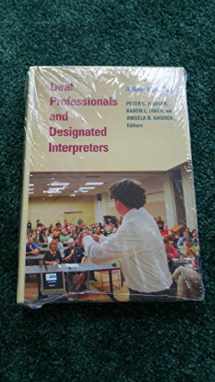
Deaf Professionals and Designated Interpreters: A New Paradigm (Volume 4)
Book details
Summary
Description
Deaf Professionals and Designated Interpreters: A New Paradigm defines a new model that depends upon strong partnerships between the growing number of deaf experts and their interpreters. Editors Peter C. Hauser, Karen L. Finch, and Angela B. Hauser have called upon more than a score of widely respected researchers to discuss the new dynamics of interpreting for deaf professionals.
Divided into two parts, this volume first delineates Designated Interpreting, in which interpreters team with deaf professionals to advance a shared point of view. Chapters in this section include the linguistics of the partnership (Look-Pause-Nod); the varying attitudes and behavior of deaf professionals and their interpreters; interaction in the work-related social setting to ensure equal participation; interpreting as affected by conversational style and gender factors; academic and educational interpreting for deaf academics; and adjusting company policies with professional interpreter guidelines.
Part II, Deaf Professional and Designated Interpreter Partnerships, offers relevant examples of interpreting for deaf professionals in real estate, contemporary art, medicine, business administration, education, mental health, film-making, and information technology. These anecdotal chapters demonstrate the critical complexity of the relationships between professionals and interpreters, a revolutionary transformation that will be appreciated by interpreter preparation programs, instructors, interpreters, and their clients alike.


We would LOVE it if you could help us and other readers by reviewing the book
Book review



